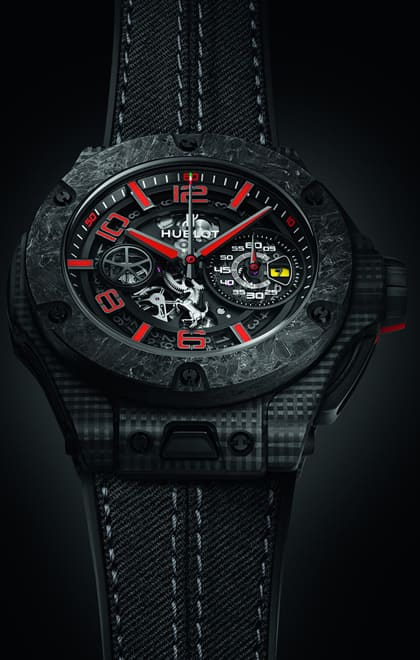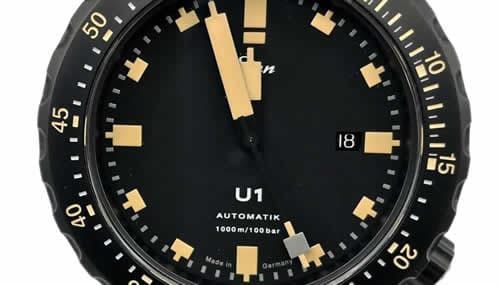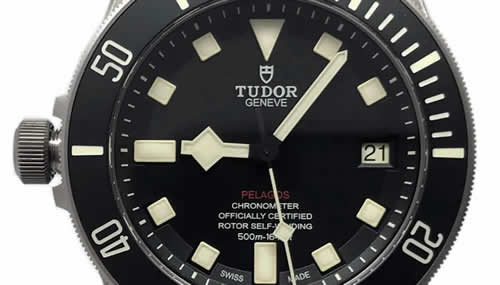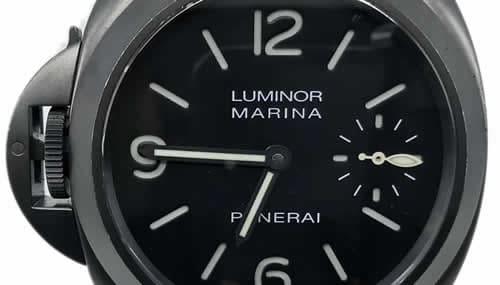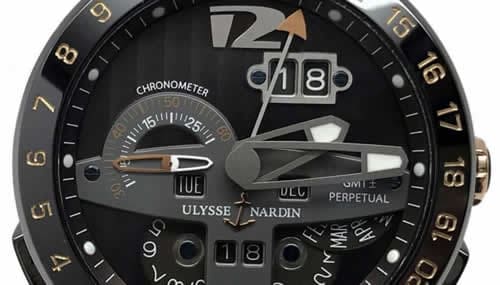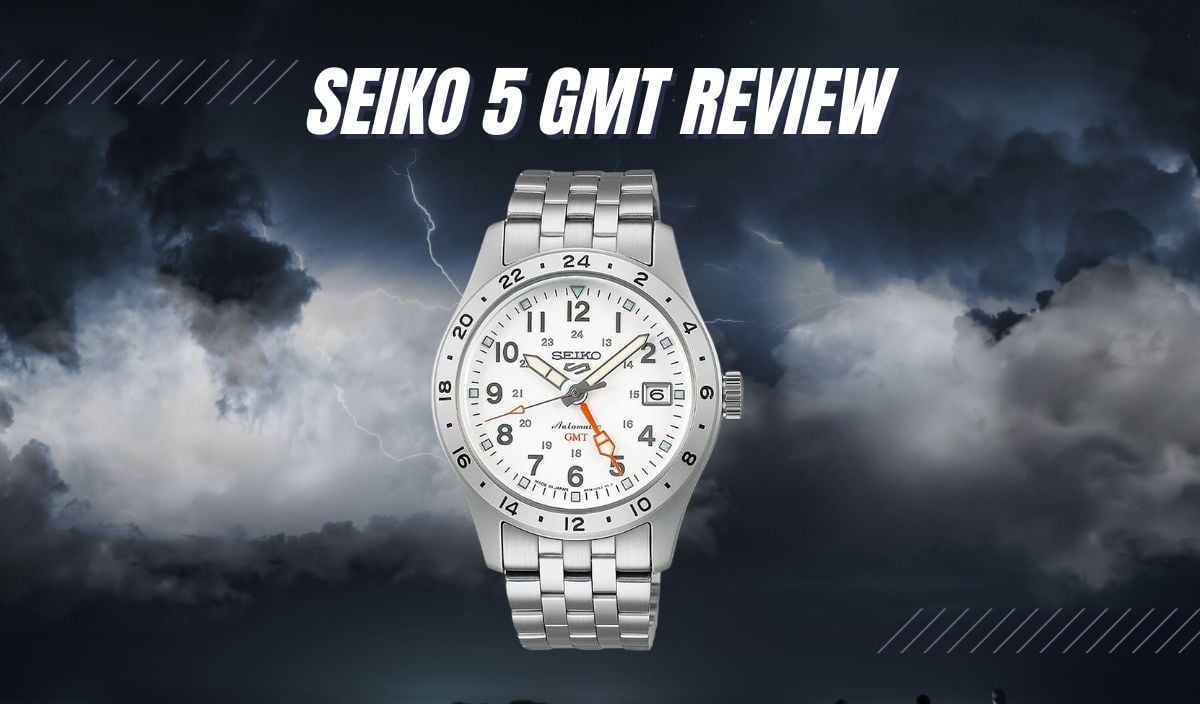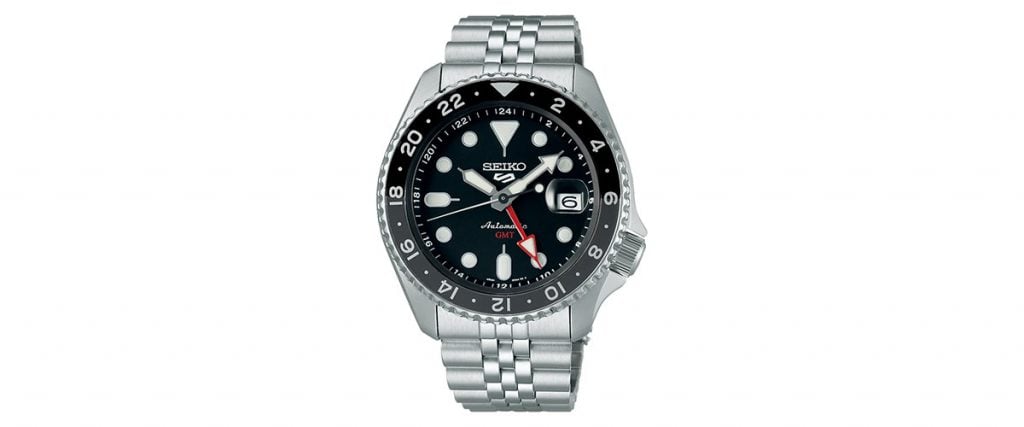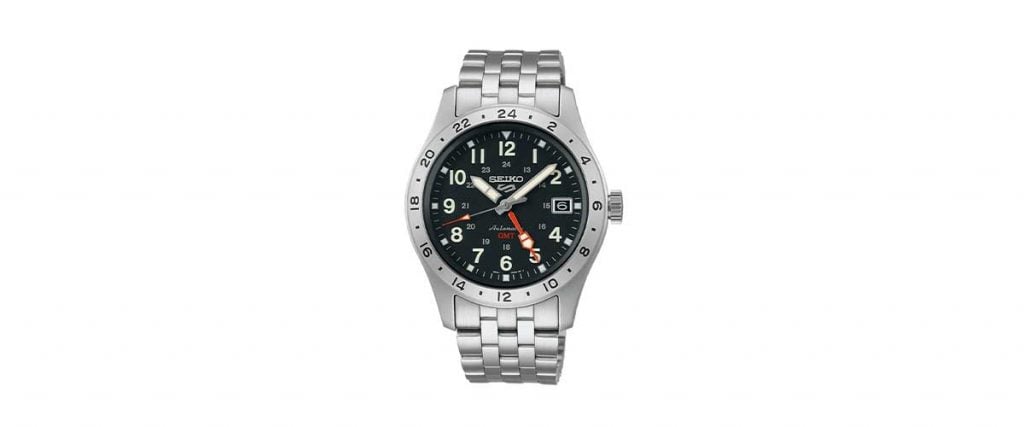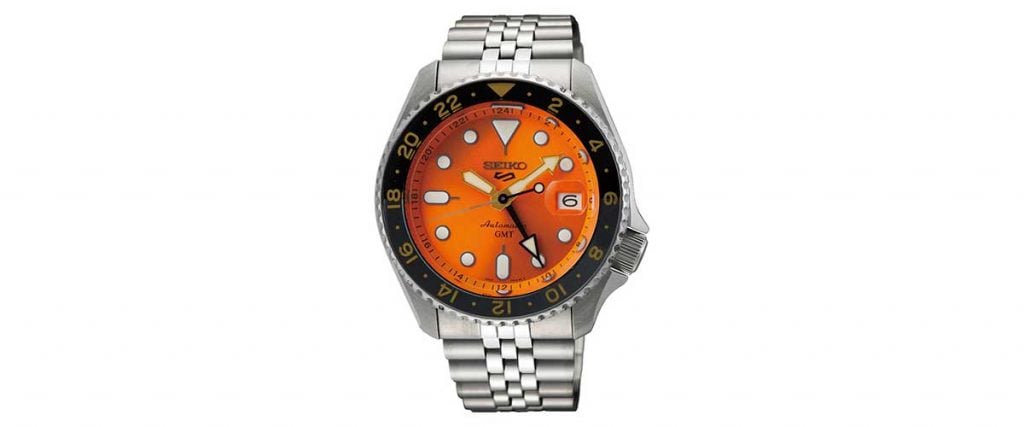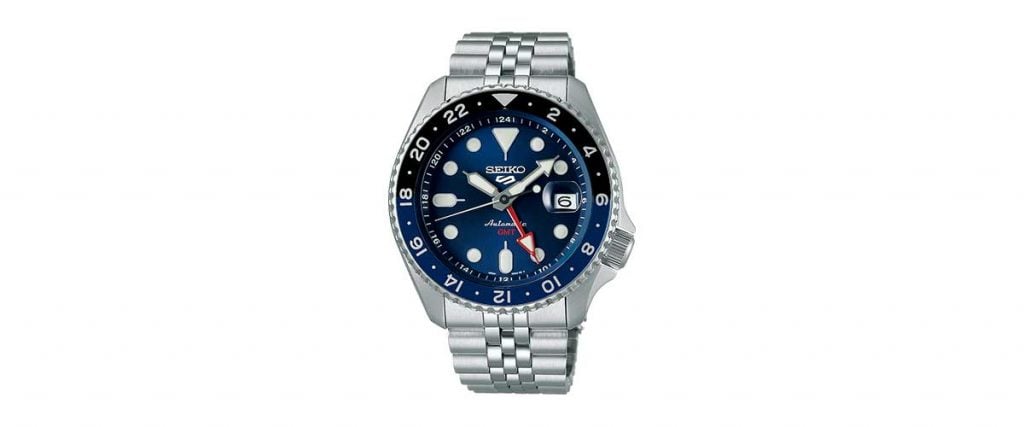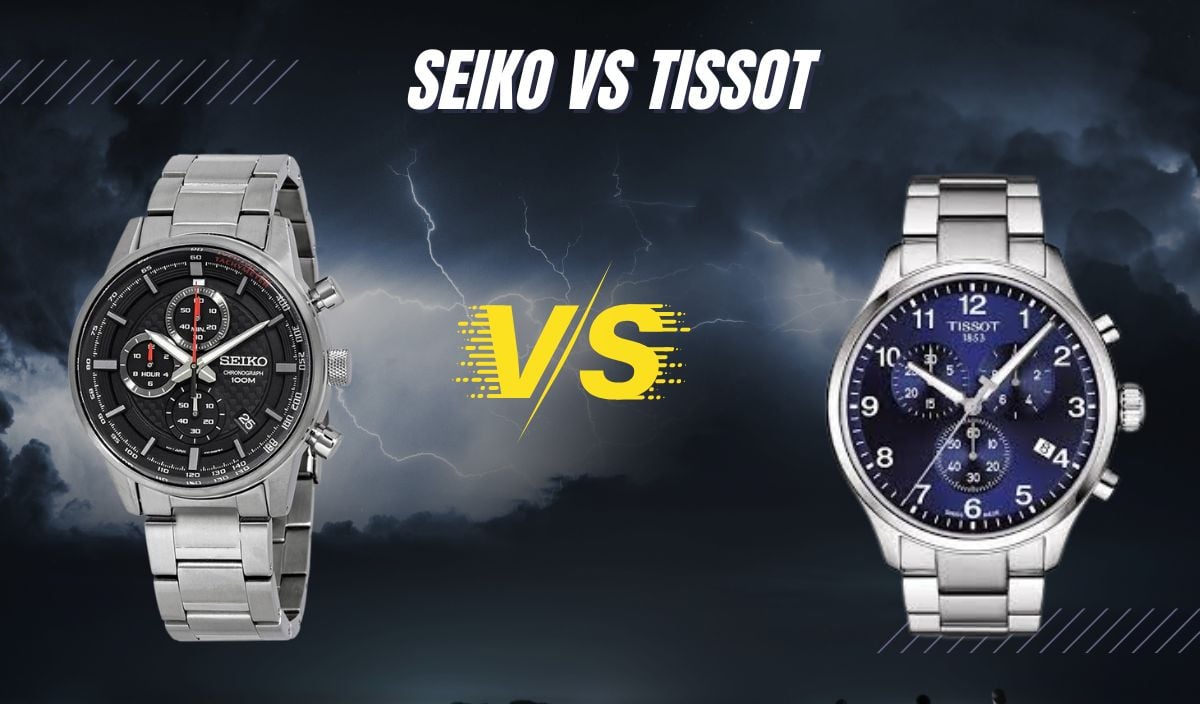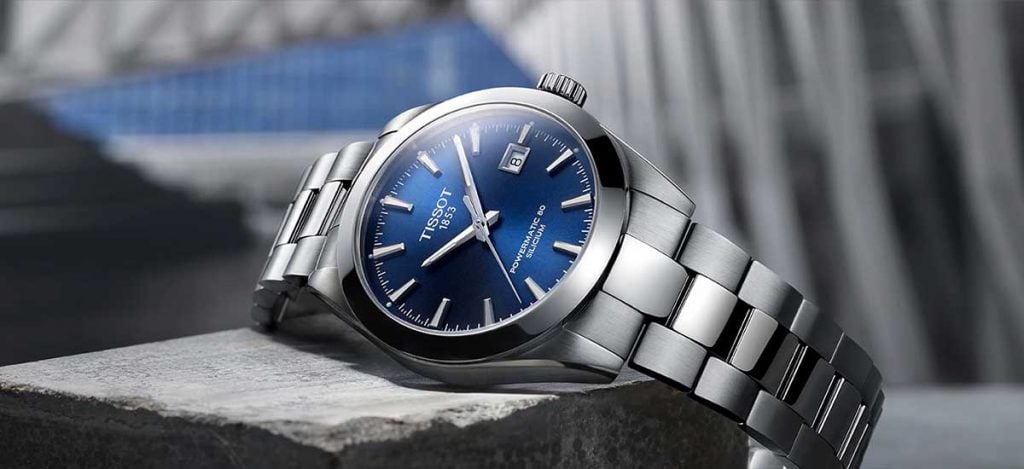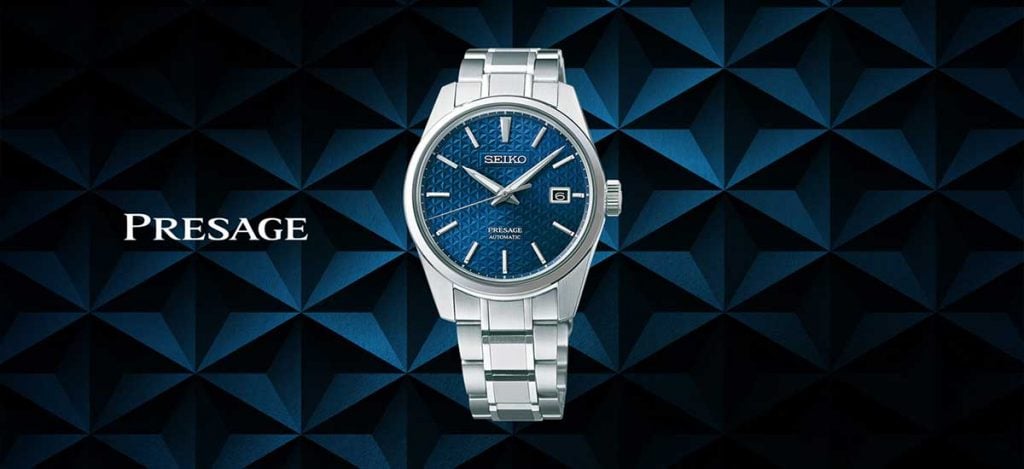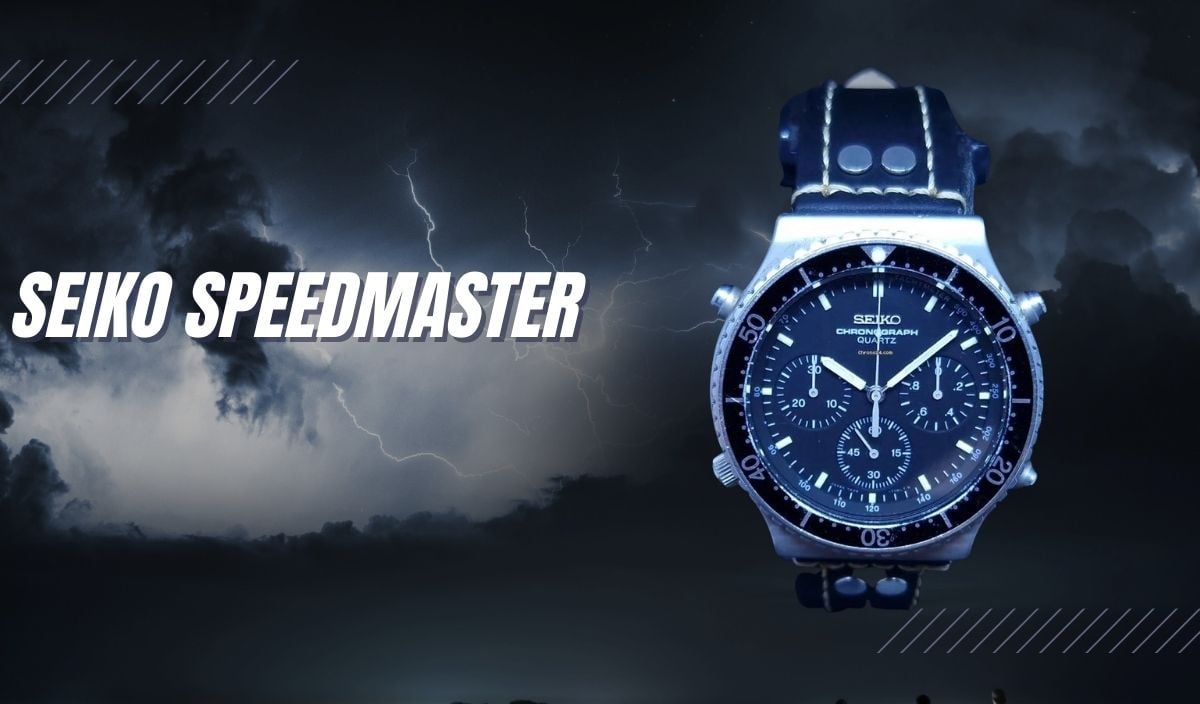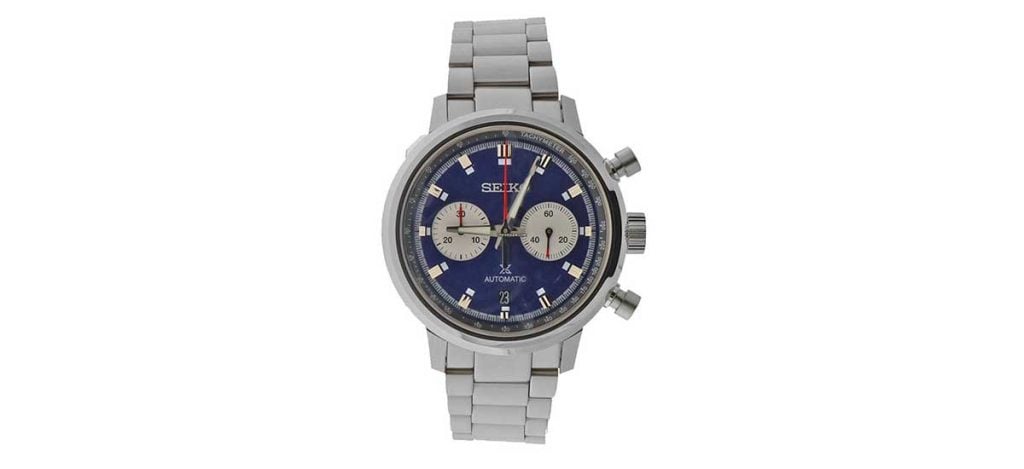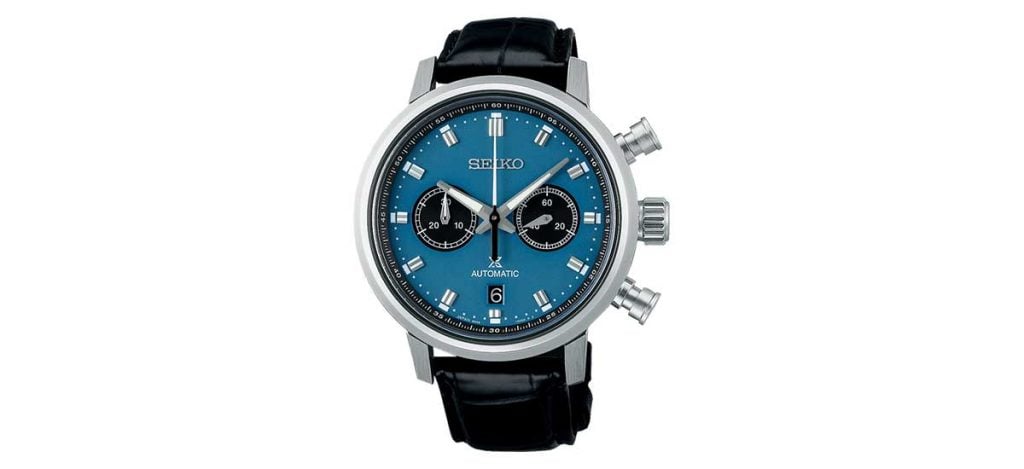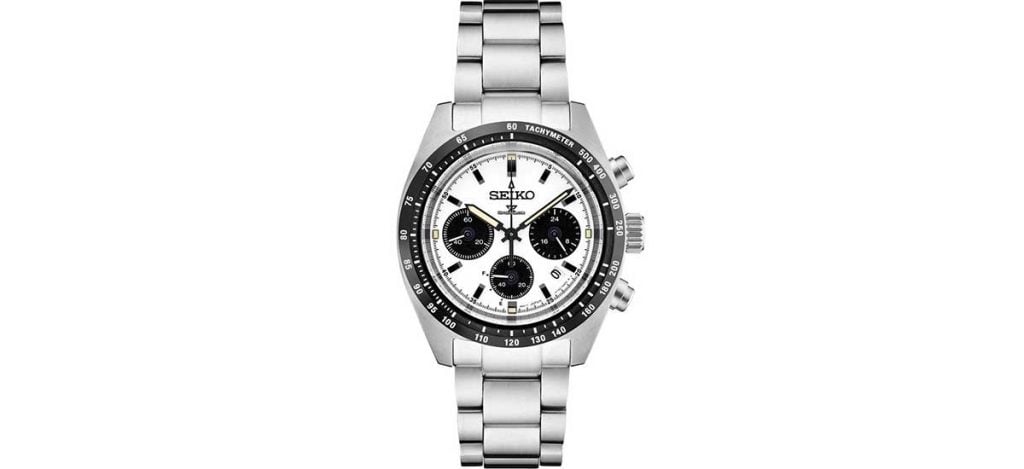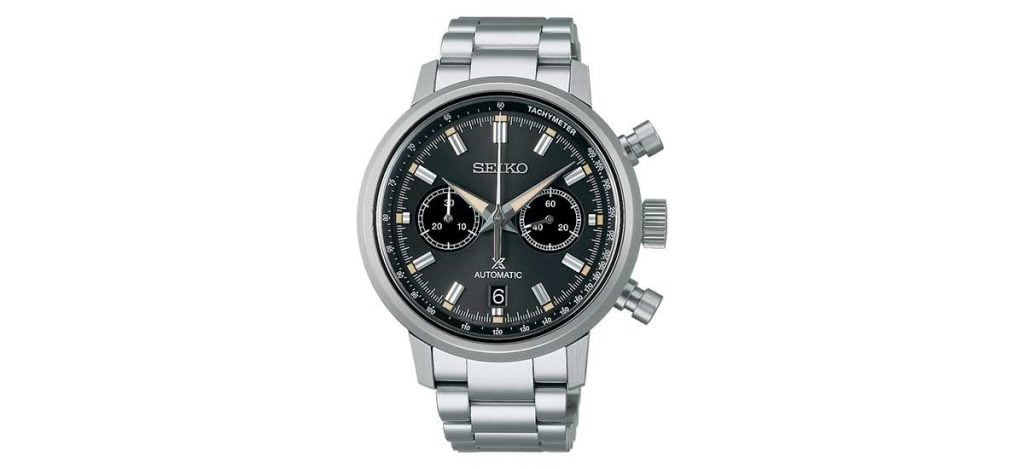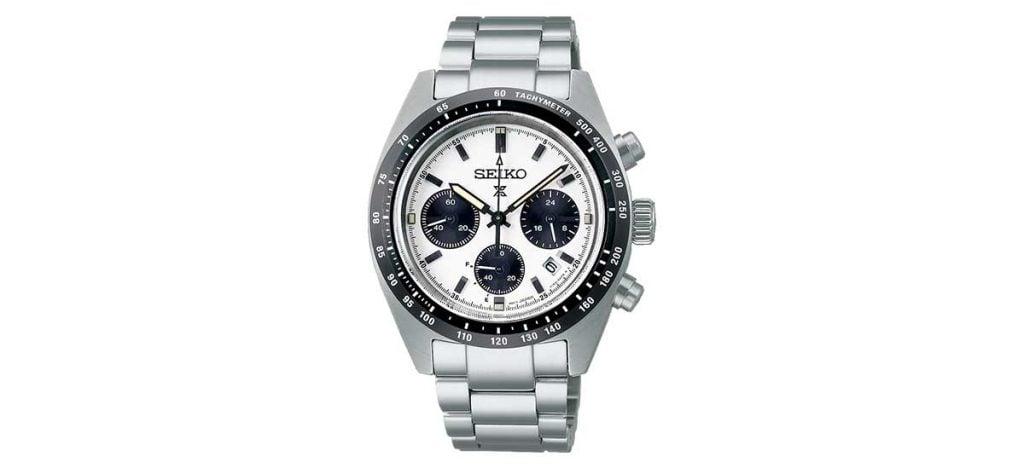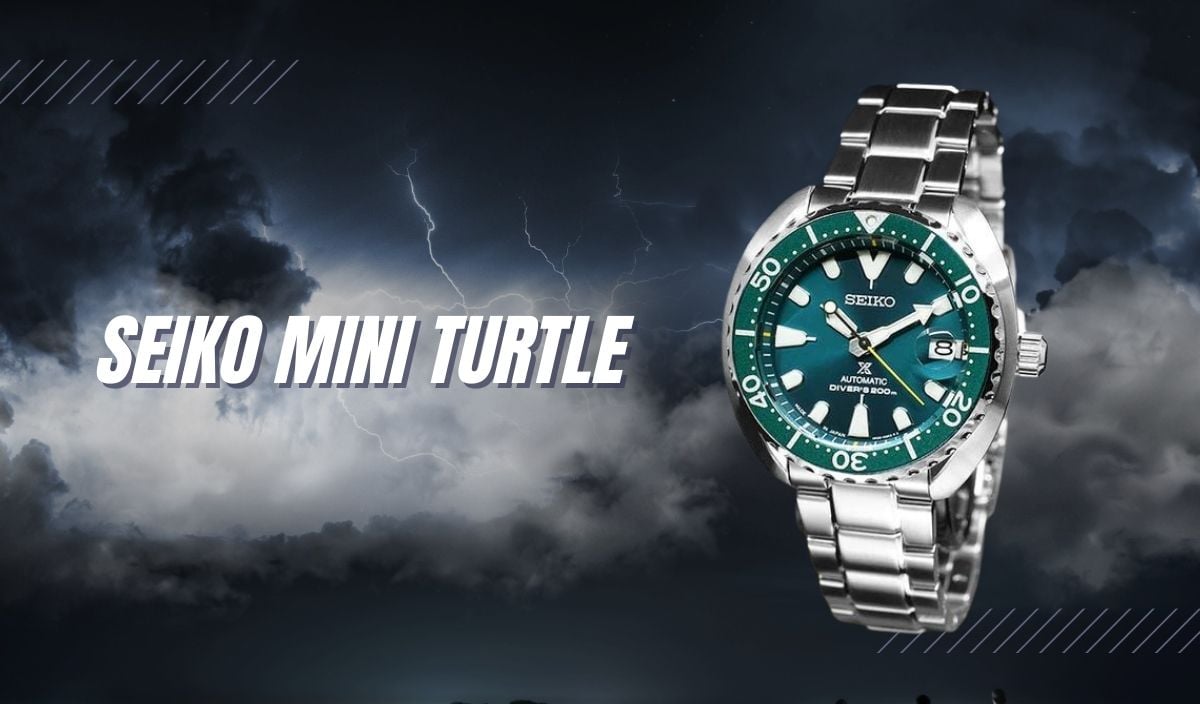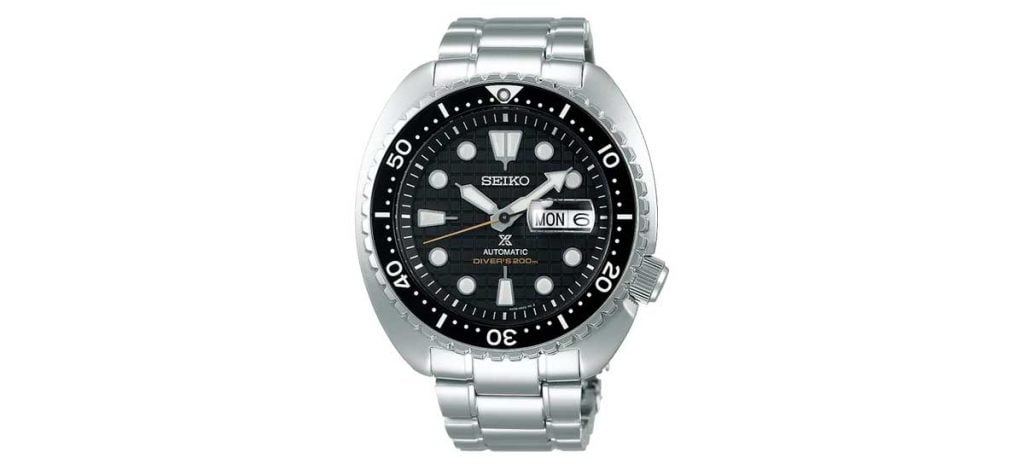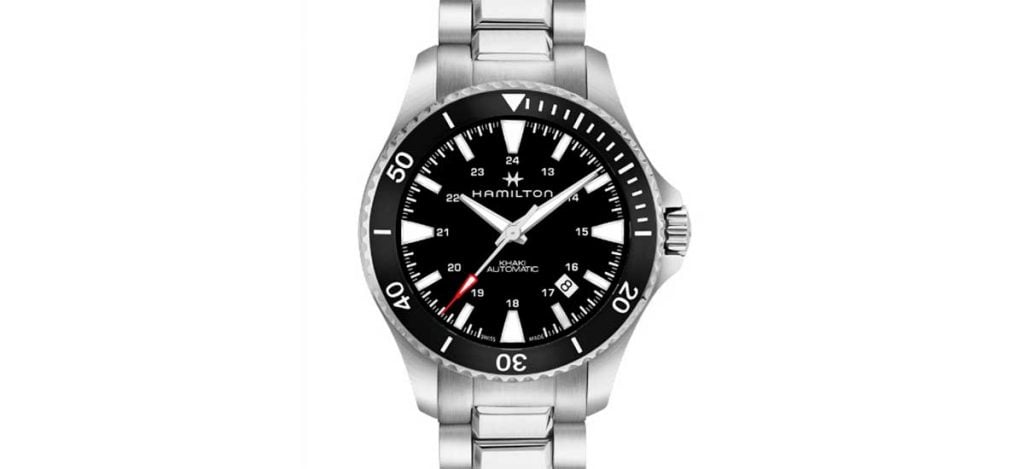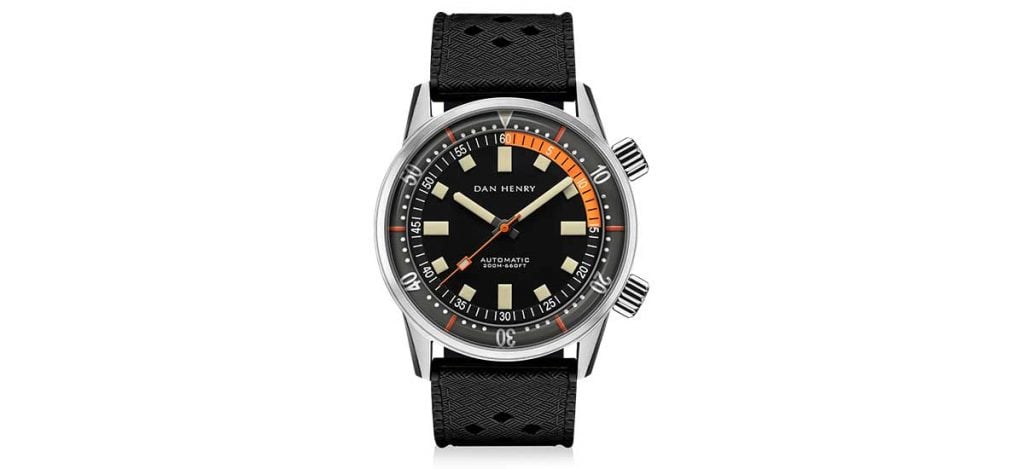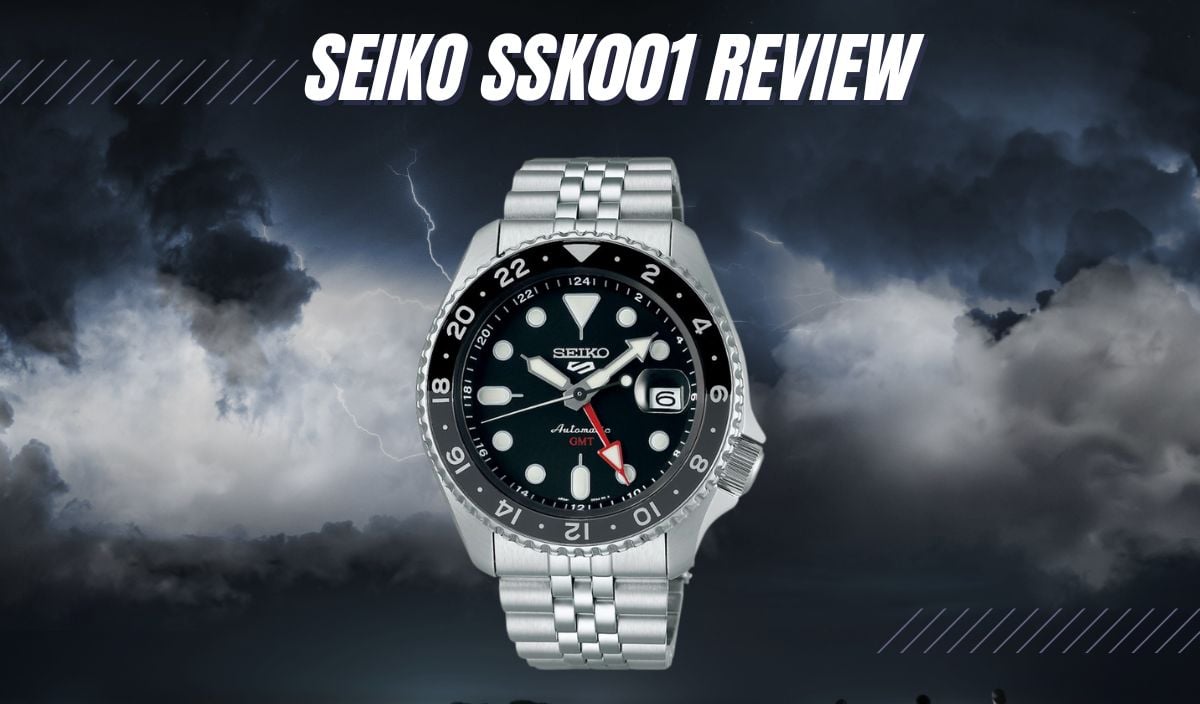
In the world of watches, most true aficionados have a diver or two in their collections. Although they have been replaced by dive computers and most dive watches never see any water other than in a thunderstorm, their style, reliability, and rugged history make them appealing.
I have never been more than one meter below the surface, yet, I own four divers. They are among the favorites in my collection. I feel like an adventurer on dry land, even sitting at my desk when I wear a dive watch. That includes the Seiko SSK001.
About The Seiko SSK001
The Seiko SSK001 is part of the Seiko Sport 5 GMT collection. It’s an automatic diver with a GMT complication that looks fantastic with casual, smart casual, or business attire. Released in the spring of 2022, The Seiko Sport 5 SSK01 is a durable, reliable, and beautiful GMT timepiece. Best of all, you can get it for less than $500. That’s not a typo.. Let’s take a closer look.
History of Seiko GMT Watches
Seiko has a long and proud history that began in 1881 when Kintaro Hattori began selling and repairing clocks and watches at a shop in Tokyo. Under the brand name Seikosha, Hattori began making clocks in 1892 and pocket watches in 1895.
Hattori created his first wristwatch, the Laurel in 1913 and in 1924, changed his company’s name to Seiko, thus beginning a tradition that continues to this day. The Seiko brand kept improving and releasing new and innovative watches. By the 1960s, the brand was producing chronographs and dive watches.
In 1967, Seiko announced its arrival in the world of elite horology, taking second and third place in the final Neufchatel Observatory and Geneva Observatory Competition. Seiko made quite a splash in 2014 when the SBGJ005 Hi-beat 3600 GMT won the Petite Aiguille Award at the Grand Prix d’Horlogerie de Geneve. The long journey led to the 2022 release of the incredible and affordable Seiko SSK001. Timepieces of this caliber don’t appear overnight, folks.
Seiko SSK001: In-Depth Review
There’s a lot to like about the Seiko SSK001, especially if you are a traveler or like to track multiple time zones and have a tight budget.
Case
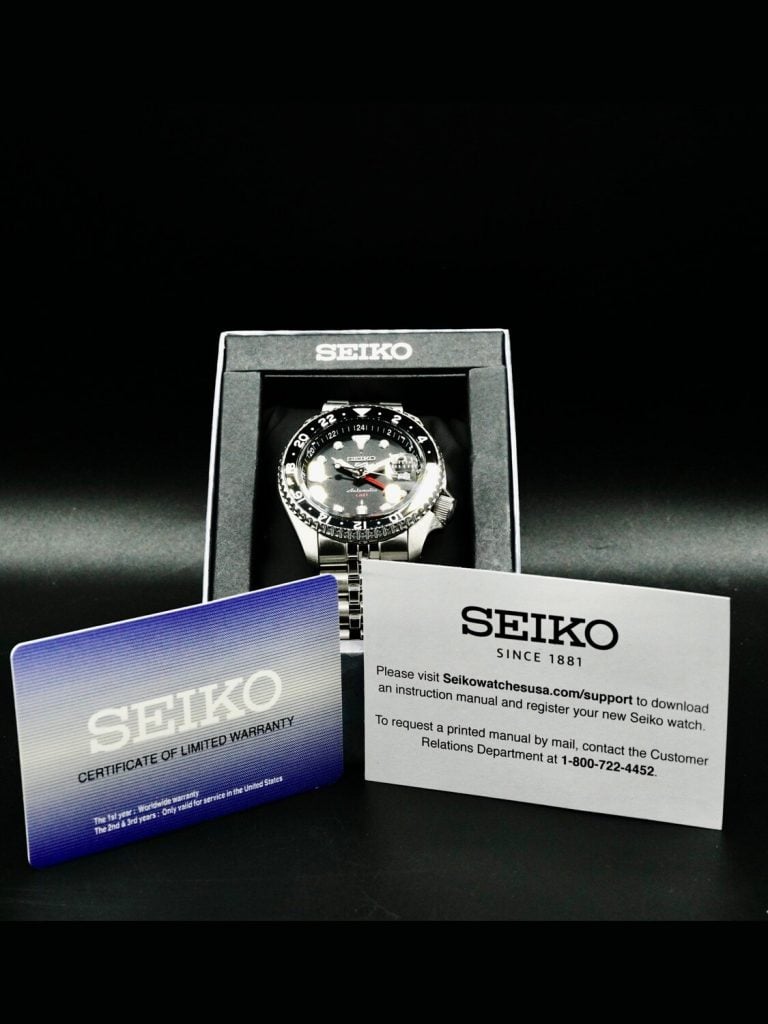
The SSK001 features a 42.5 mm stainless steel brushed case with polished sides to make it stand out. This size suits many wrist sizes. Mine is an average 7.25 inches, and the SSK001 is right in the wheelhouse of my preferred case size. With a lug-to-lug width of 46 mm and a thickness of 13.6 mm, this watch wears well on smaller wrists.
If you’re a watch nerd like me, you’ll appreciate the exhibition case back, which allows you to get a good look at the movement. The crown is not screw-in, making this timepiece more of a desk diver. It sits at four o’clock rather than at three. Some people have trouble with the asymmetry, but I feel it adds character and unique charm to this timepiece.
Bezel
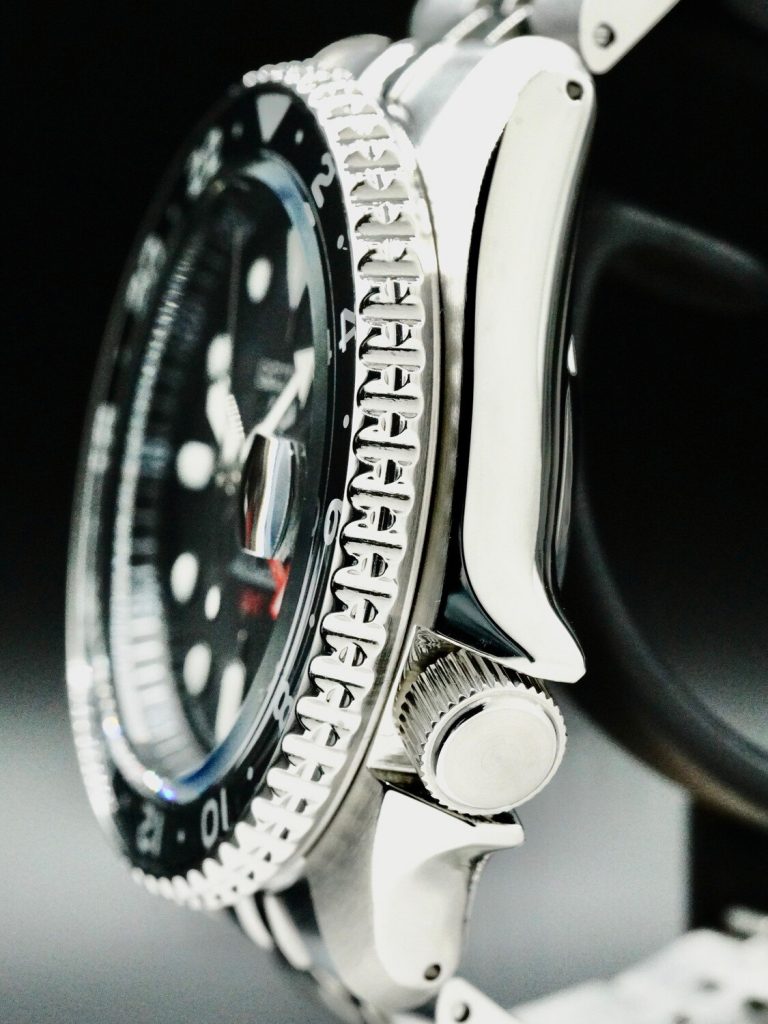
As a proper GMT watch, the SSK001 has a 24-hour bezel. The black and gray two-tone insert indicates day and night and it turns unidirectionally with 120 clicks for a smooth motion that feels nice. Arabic numerals are set at the even numbers with dots at the odd and a large inverted triangle at 12 o’clock.
Materials
Seiko uses high-quality materials in the SSK001. The case and bracelet are made from surgical-grade stainless steel. The bezel is aluminum and polished to a nice finish. The same quality stainless steel is used for the hands.
Dial
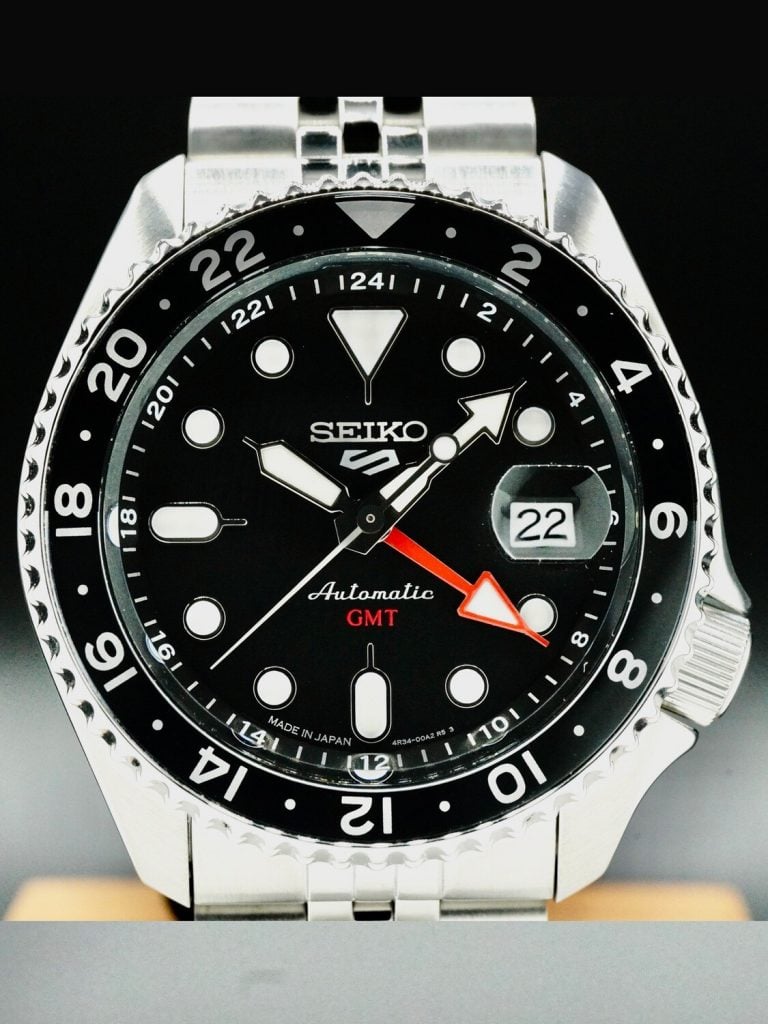
The dial is a black sunray burst beauty. I prefer neutral colors. They go with anything and provide a classic and timeless style. The sunray pattern gives the dial a bit of pop, especially in bright light. The Seiko name and logo are applied at the 12 o’clock position with the date function at three.
Pill-shaped indices sit at six and nine o’clock, with an inverted triangle at 12. Dots are set at the five-minute markers in between. All the indices are applied and filled with Lumibrite, such as the minute, hour, and GMT hands. You won’t have any trouble seeing the time at night.
The minute hand is a broad arrow, and the hour hand has the classic sword shape. The second hand is a needle, and the GMT hand is a large, red arrow that stands out nicely. The dial is covered by a Hardlex crystal. Would I have liked to see sapphire here? Absolutely. But we all know Seiko loves to cut corners, and the crystal is always one of its first priorities.
At three o’clock above the date complication sits a Cyclops magnifier. This is a feature that tends to divide watch enthusiasts. Some love it, some could live without it. Personally, I like the way it makes the date much easier for my aging eyes to read. A bonus is that it’s pill-shaped and adds a nice symmetry to the indices at six and nine.
Movement
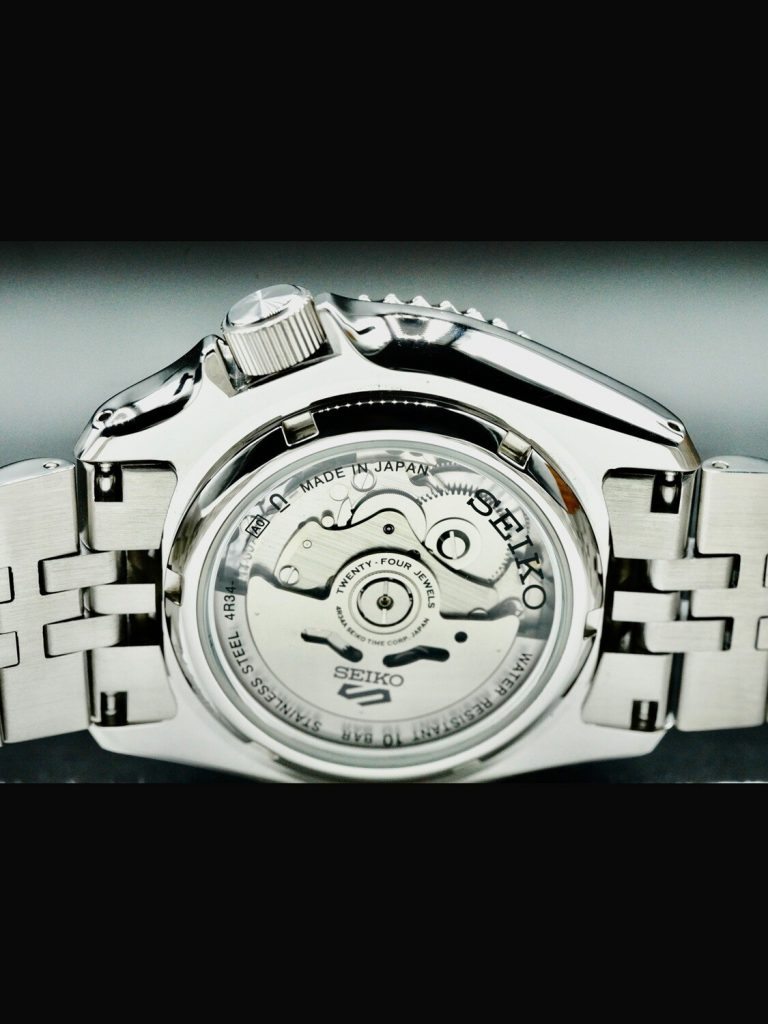
The Caliber 4R34 automatic movement is reliable and durable. It has 24 jewels and operates at 21,6000 bph. For a watch at this price point, the accuracy of +45/-35 seconds per day is respectable, and the movement has a 41-hour power reserve. This is more than enough if you wear it every day. I keep mine on a watch winder, so it’s always ready to go.
The Seiko SSK001 is a caller-type GMT, meaning you can’t set the hour hand separately. Pulling the crown out to the first position allows setting the GMT hand by turning clockwise. Counterclockwise changes the date. The second position sets the time by turning in either direction.
Strap
Holding the watch on your wrist is a stainless steel, five-link jubilee bracelet. The polished surfaces shine nicely. Seiko has improved on its earlier jubilee bracelet which tended to be jangly. This version feels more solid and wraps neatly around the wrist. The bracelet tapers to a trifold, two-button clasp that feels secure. Solid end links add to the look and feel.
Should You Buy A Seiko SSK001?
Is the Seiko SSK001 right for you? If you travel or do business with people in other time zones, you could benefit from a GMT. People with a sense of adventure will enjoy the dive-watch nature of this timepiece.
The neutral colorway is perfect if your style is classic and timeless. It’s a versatile watch that can be your GADA. If you are looking for a stylish, well-made, and reliable watch but don’t have the budget for a four, five, or (gasp) six-figure price tag, this may be the ideal choice. You get plenty of bang for your buck.
Seiko SSK001 Pricing & Availability
If you are ready to pull the trigger, the Seiko SSK001 is readily available at a Seiko store or from their website. You can also buy one at Seiko authorized dealers, like Exquisite Timepieces. You can always stop into our boutique in Naples, Florida, to try one on or purchase it online. There is also the option of purchasing one of these beauties new or preowned on the secondary market.
The MSRP of the Seiko SSK001 is just $475. If you shop around or have a good relationship with an AD, you might get one for a bit less and can also save by going preowned. Depending on the condition, you can pick a used one up for between $250 and $350.
Seiko SSK001 Alternatives
If you like the Seiko SSK001 but would prefer different colors or strap options, there are several other models. They are all powered by the same movement and offer the reliability of the Seiko 5 Sports GMT watches with varying features and styles. With the exception of the Yuto Horigome model, they are priced the same as the SSK001.
Seiko 5 Sports GMT SSK003
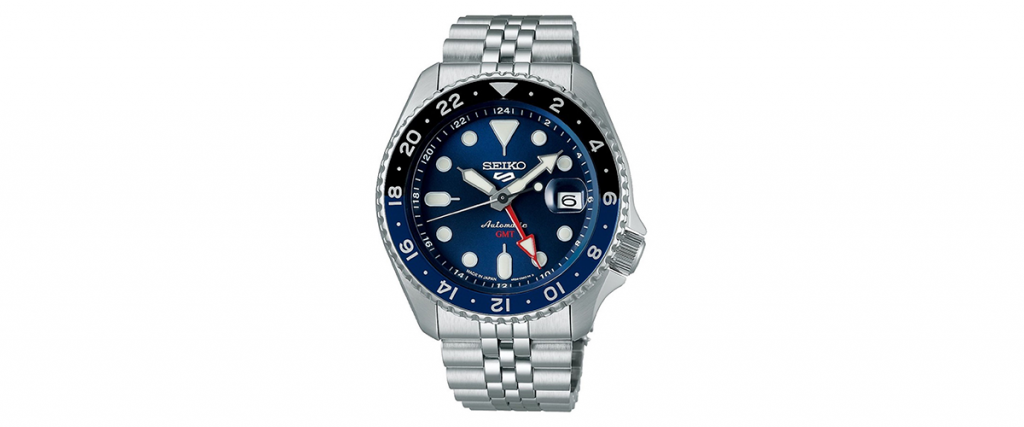
The Seiko GMT SSK003 is identical to the SSK001 except for its color. It features a stunning blue sunray dial and a two-tone black and blue bezel. It is a bit bolder than its black-dialed cousin but retains a classy and subtle look. It’s a nice addition to any collection.
Seiko 5 Sports GMT SSK005
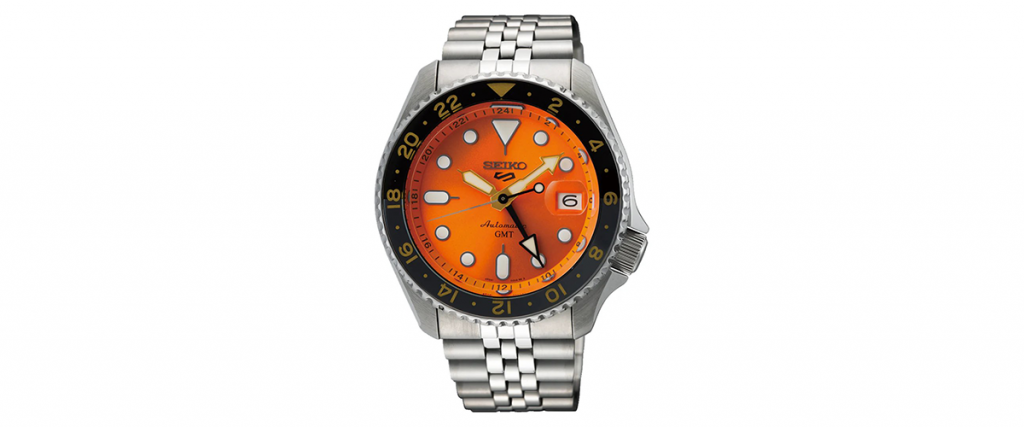
Maybe you want a watch that really pops. The Seiko GMT SSK005 has a bright orange dial that will stand out. Along with its orange minute and hour hands and gray GMT hand, this timepiece makes a statement. The black and gray two-tone bezel offers a nice contrast to the dial. You get the same movement, bracelet, and reliability in a watch that suits a flashier sense of style.
Seiko 5 Sports GMT SSK021 Grey Two-Tone
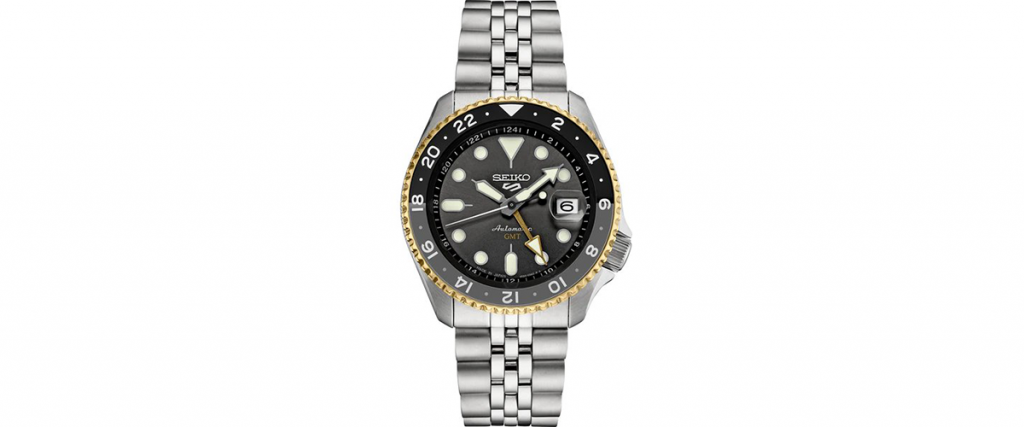
For the same subtle, timeless style with just a touch of bling, check out the Seiko GMT SSK021. The classy gray dial and matching minute and hour hands blend well with the two-tone black and gray bezel. The outer edge of the bezel is a shiny gold color that matches the GMT hand. It adds a touch of boldness without being in your face. The movement and bracelet are the same as the SSK001.
Seiko 5 Sports GMT SSK019 Black
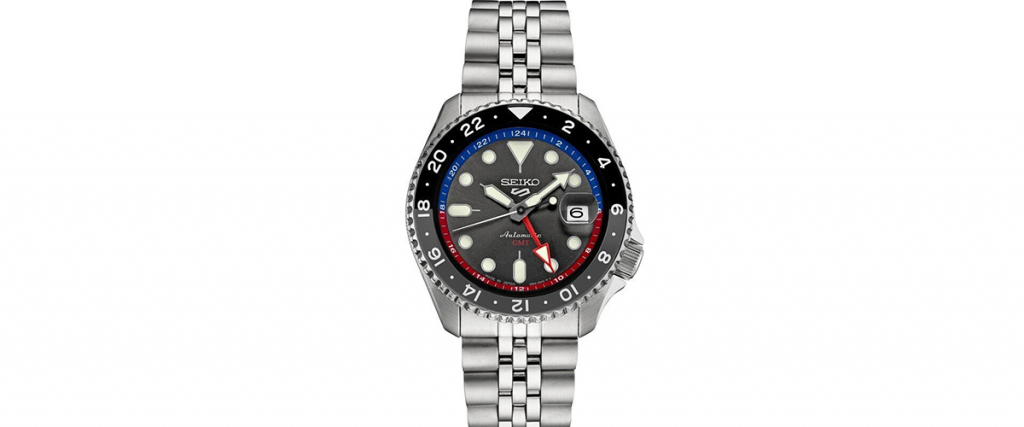
Perhaps you love the bracelet and elegance of the SSK001 but want just a little bit of color. The Seiko GMT SSK019 may be the perfect watch for you. It has the same black sunray dial, black and gray bezel, and red GMT hand but with an added twist. The outer edge of the dial is two-tone red and blue. It makes the dial stand out but is not ostentatious.
Seiko 5 Sports SSK027 Yuto Horigome Limited Edition
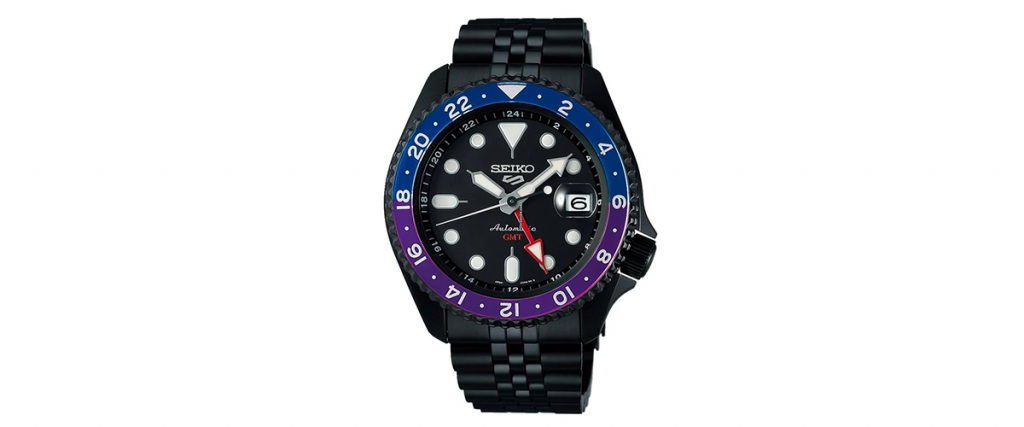
For exclusivity and a look that stands out in a completely different way, you may love the Seiko SSK027 Yuto Horigome Limited Edition. A tribute to the first-ever gold medalist in Olympic skateboarding, Seiko only made 2700 of these pieces, so you may have to track down a pre-owned watch. The brand-new models have an MSRP of $525, just slightly higher than the others in the collection.
The stainless steel case and bracelet are the same style and quality but coated in black. The black dial is surrounded by a black and purple two-tone bezel. It’s a unique look for the Seiko 5 GMT collection, and you will have a conversation starter that you won’t see on the wrists of many other people.
Conclusion
Diver GMT watches are among the most popular with watch enthusiasts. They do tend to be pricey and outside the range of many people’s budgets. Seiko has come to the rescue with the Seiko SSK001 and the other models in the Sports 5 GMT collection.
A stylish, reliable, and well-made GMT diver can be yours for less than half a grand. Imagine that. One final bit of advice. The Seiko Sports 5 GMT watches have a 100-meter water resistance. Go ahead and swim in them, but if you’re snorkeling around a reef or have a diving adventure, leave your Seiko on dry land.

